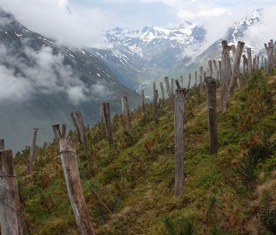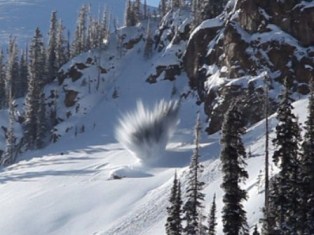| Home |
Who we are |
What we do |
Our projects |
Contact us |
Avalanche Mitigation
Avalanche mitigation can be divided into two categories - structural and non-structural. Non-structural methods include avoidance (through land use restrictions or temporary evacuation) and artificial triggering. Structural measures include diversion structures, dams, retarding structures and starting zone structures design to prevent avalanche initiation. Forest management can also be used to mitigate avalanche hazards.
The following are the most commonly used methods for protecting people and infrastructure from the potentially destructive forces of snow avalanches. The list is in approximate order of increasing cost.
Artificial Triggering (Active Control) |
Avalanche Zoning
Avalanche zoning is probably the most reliable means of minimizing risk in avalanche terrain. However, the costs for obtaining high-quality avalanche hazard maps can be significant, and regardless of effort, hazard zone boundaries will entail some uncertainty. Also, restrictions on land use and increased construction costs in moderate "Blue" hazard zones is a major political obstacle, especially in mountain resort communities with limited gentle terrain and high land values.

|
AfforestationPreservation and protection of forests in avalanche starting zones is one of the oldest and most widely used avalanche mitigation measures. The Swiss recognized the value of forests for avalanche protection and enacted legislation in 1876 preventing forest removal above villages in avalanche areas. In North America, timber harvesting has created new avalanche hazards and resulted in a better understanding of the relationship between forests and avalanches. |

 Artificial triggering of avalanches is a widely used cost-effective method for protecting roads, railroads,
ski areas and other sites that can be efficiently and completely evacuated, and there is little or no risk of
property damage. The use of artificial triggering to protect permanent valuable facilities such as houses
is controversial and generally avoided in the United States because of the potential for unintended consequences
and acceptance of responsibility for damages.
Artificial triggering of avalanches is a widely used cost-effective method for protecting roads, railroads,
ski areas and other sites that can be efficiently and completely evacuated, and there is little or no risk of
property damage. The use of artificial triggering to protect permanent valuable facilities such as houses
is controversial and generally avoided in the United States because of the potential for unintended consequences
and acceptance of responsibility for damages.